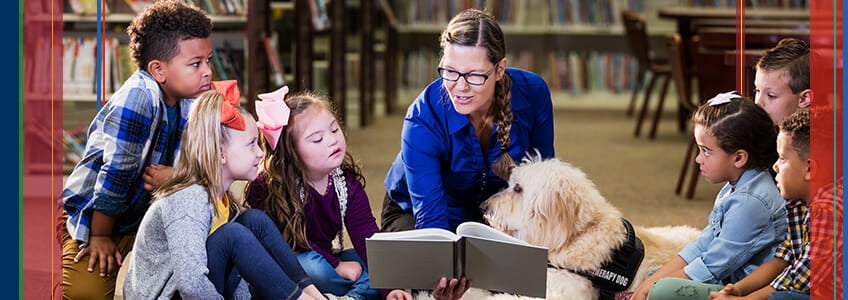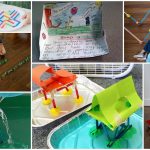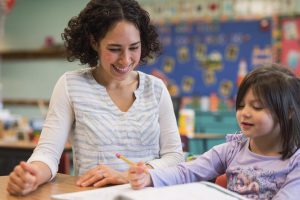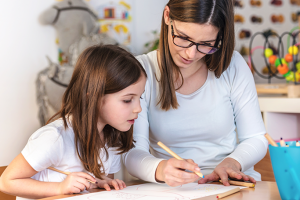
Mainstreaming or inclusionary practices refer to educating students with special needs in the general education classroom alongside their typical peers. With the shift away from full-time special education settings, more diverse learners are now sharing general education classrooms. As an educator, you play a pivotal role in shaping an inclusive environment that embraces students of all abilities. Here we will explore research-backed tips to foster a supportive, accepting classroom community for mainstreamed students.
Understanding Inclusion and Mainstreaming Practices
Before diving into specific strategies, it is helpful to understand the premise of inclusion. Educational researcher Richard Villa defines inclusion as “providing to all students, including those with severe disabilities, equitable opportunities to receive effective educational services.” Mainstreaming places students with disabilities into general education classrooms once they have met defined milestone criteria, often through early intervention programs. Mainstreaming is rooted in the goal of exposing special needs students to higher expectations, peer models, and meaningful participation. Successful mainstreaming depends upon implementing the appropriate accommodations and supports within an inclusive climate. As Maya Angelou said, “In diversity there is beauty and there is strength.” Harnessing student diversity strengthens the entire classroom.
Physical Classroom Setup for Inclusion
To accommodate a wide spectrum of learners, the physical environment requires forethought. Consider the following elements:
- Flexible Seating – Offer different types of seating like cushions, stools, or standing desks
- Designated Areas – Have a reading nook, quiet zone, sensory space, etc.
- Accessible Materials – Store supplies at different heights and use labels and pictures
- Sensory Tools – Provide headphones, fidgets, exercise balls, wiggle seats
- Distraction Reduction – Use dividers or headphones to minimize noise
The classroom layout directly impacts how comfortably and successfully mainstreamed students can engage. Offering options tailored to different needs builds a culture of empowering students to self-regulate.
Establishing Classroom Routines and Expectations
Students with special needs thrive when they know what to expect throughout the day. Maintaining consistency through routines and clear expectations alleviates anxiety. Strategies include:
- Post visual daily schedules and refer to them often
- Model and practice transition routines using timers and warnings
- Co-create and display classroom rules with visual aids
- Use checklists for mainstreamed students who need task prompting
- Give reminders before changes in activities or locations
Starting and ending each class the same way, having set transition times between tasks, and reviewing rules consistently provides comfort through continuity for mainstreamed students.
Promoting Social and Emotional Learning (SEL)
Navigating the social landscape of a general education classroom can be challenging for students with disabilities. Make social-emotional learning an integral part of lessons to foster community and relationships. Useful SEL teaching approaches include:
- Group bonding activities like ice breakers and get-to-know-you games
- Explicit instruction on social skills like starting conversations
- Role playing appropriate interactions and responses
- Feelings identification exercises to build self-awareness
- Reflection on similarities and differences among classmates
Carving out time to develop social awareness, relationship skills and responsible decision making allows mainstreamed students to feel secure and valued.
Facilitating Quality Peer Interactions
Along with direct SEL instruction, providing opportunities for positive peer interactions enables mainstreamed students to make social connections. Some ways teachers can facilitate quality peer interactions include:
- Structured partner and group work activities
- “Buddy systems” with peer mentors and role models
- Clubs, lunch groups or special events based on shared interests
- Class-wide community service projects to work together
- Classroom jobs and roles to build responsibility and teamwork
Through collaborative learning and sharing interests and experiences, general education and mainstreamed students gain empathy and friendship. Counselor Michele Borba notes, “Peer influence is a teaching tool we need to harness.” Guiding genuine peer bonds makes the classroom more welcoming.
Differentiating Instruction and Assessment
With various skill levels in an inclusion classroom, adopting differentiated teaching practices becomes essential. Multiple options for accessing content, expressing learning, and demonstrating knowledge benefits all students. Strategies for differentiation include:
- Customize process, content or product to student ability level
- Provide reading, writing, and technology supports as needed
- Give choice boards, menus, or stations that allow varied ways to learn
- Teach using visuals, demonstrations, objects or experiences along with lecture
- Offer alternate ways to respond like oral exams or projects instead of written tests
- Grade on effort and skill growth, not against standardized benchmarks
Psychologist Howard Gardner’s theory of multiple intelligences reminds us that students have different strengths. Adjusting teaching and evaluation methods to play to student strengths fosters an empowering culture of diversity.
Cultivating Family Partnerships
Finally, mainstreaming succeeds best when families are actively involved in their child’s education and classroom community. Ideas for family engagement include:
- Have families share their child’s talents, interests, needs
- Maintain ongoing two-way communication through multiple means
- Inform families of classroom happenings through newsletters or apps
- Invite families to volunteer, visit or help with special class events
- Solicit family feedback when planning goals for the child
- Share successful inclusion strategies families can reinforce at home
Former teacher Rita Pierson said, “Kids don’t learn from people they don’t like.” Making families feel welcome and included benefits the child immensely.
Creating an inclusive classroom environment for mainstreamed students is multifaceted, but immensely rewarding. By intentionally planning the physical space, routines, peer interactions, instructional strategies and family partnerships with the needs of all students in mind, every child feels valued, supported, and set up for academic and social success. When diverse needs are met with compassion, classrooms become vibrant, harmonious communities where everyone can achieve their potential.
















